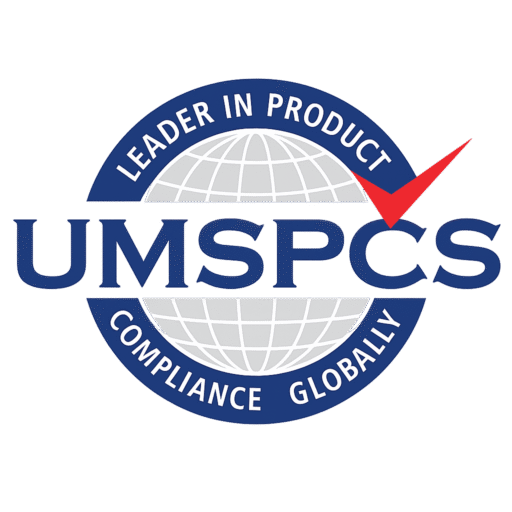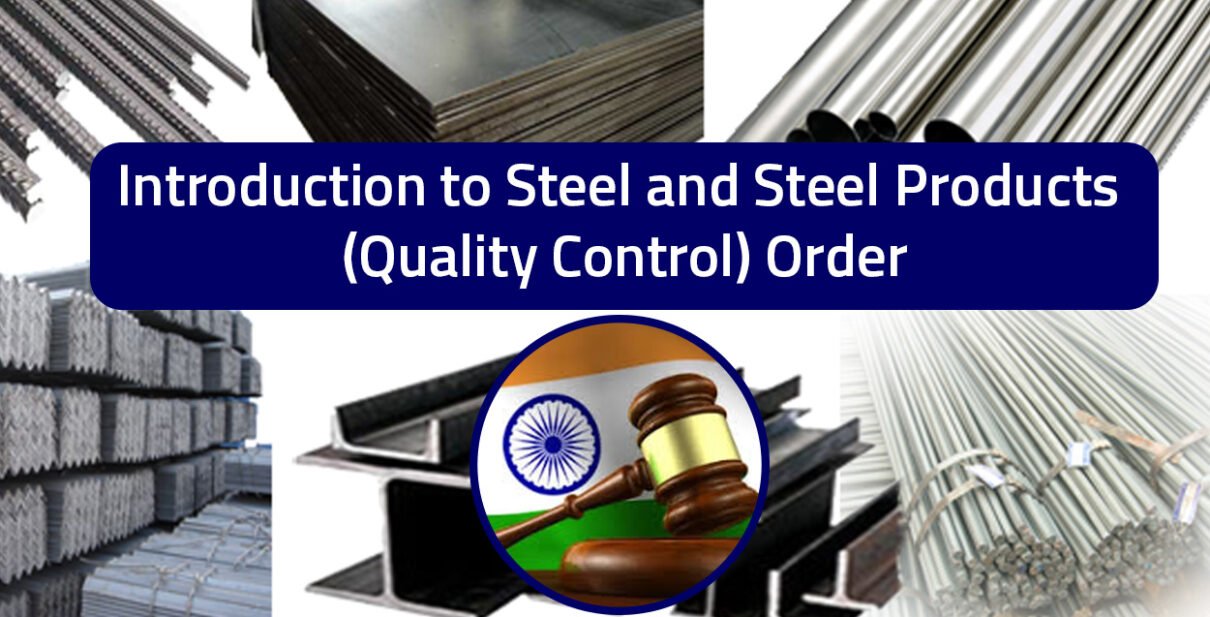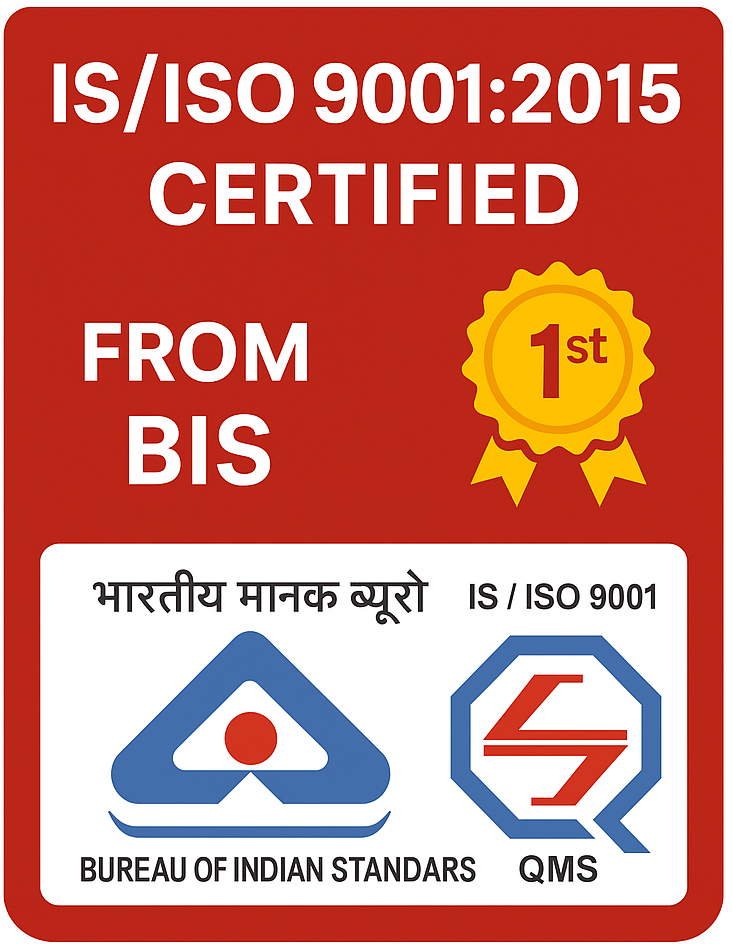- October 17, 2025
- by umspcs
- Blog, Latest Notifications, News & Updates
- 42 Views
- 0 Comments
Indian steel industry is a giant which manufactures everything from skyscrapers to day-to-day commodities. But when things tend to grow, they require checks and balances to make sure that they are safe and reliable. The Steel Ministry has promulgated the Steel QCO (Steel and Steel Products Quality Control Order), 2024, which is set to change things. The order, published on August 29, 2024, and gazetted a day later, is a stricter one than one published in February with superior quality standards.
We’ve taken a lot of time to read through all these regulations, and it is obvious that they are meant to safeguard the consumer and help businesses compete with cheap imports.
The Order’s Background and Purpose
The Bureau of Indian Standards (BIS) Act, 2016, issued the Steel and Steel Products QCO, 2024. The Central Government can demand quality controls in the public interest under sections 16, 17, and 25(3).
India has given comparable orders for other industries, like toys and electronics, but this is a significant deal for steel. The directive from February 2024 was replaced, but the actions that were done under it are still lawful. However, stronger regulations are now in place.
Why do it? When steel isn’t up to par, it can cause problems like bridges falling down or machines breaking down. The order’s goal is to make sure that a wide range of steel goods meet Indian Standards (IS), which means they are safe, long-lasting, and appropriate for their intended use.
It’s also about stopping low-quality goods from coming in from other countries to help “Make in India”. India’s steel output is above 120 million tons a year, which pushes for excellence and might save lives and money in the long term.
Important Parts of the Order:-
The sequence is easy to understand because it is divided into parts. It begins with the basics: name and start time. Effective right away after publishing (August 30, 2024), unless otherwise stated.
- The application is important since it includes steel items in Schedule 1 and goods/articles in Schedule 2.
- It is necessary to follow the rules. All of the products in Schedule 1 must have the same IS code as the dates stated. Every shipment needs a Standard Mark BIS-certified test certificate.
- There are extra layers for Schedule 2 goods, such as transformer cores or stainless steel pipes. Some need a Certificate of Conformity under Scheme-IV, while others must employ BIS-marked inputs like stainless steel or tin plate.
- For Schedule 1 products, the Standard Mark is required under Scheme-I. Things that aren’t up to par? You can throw it away as scrap without breaking the BIS Act. You can’t sell garbage.
- BIS is in charge here, making sure that rules are followed and giving out certifications. Break? Section 29 says that people who break the law will have to pay fines, go to jail, and do other things. Changes to IS codes go into effect on the dates when BIS tells people about them.
Steel Goods and Products Covered
There are 151 steel items in Schedule 1, together with their IS numbers, titles, ITC (HS) codes, and implementation dates. Most of them start “with immediate effect,” while some, like ferroalloys, take 6 months or more. Here are several examples:
- IS 1785 (Part 1): 1983 for plain hard-drawn steel wire for pre-stressed concrete (codes like 72171010).
- IS 277: 2018 for galvanized steel sheets (72104100, etc.).
- IS 2062: 2011 for hot-rolled medium and high tensile structural steel, excluding small bars and structurals.
It includes wires, plates, sheets, bars, and even unusual items like electrical steel or alloy forgings. Customs uses HS codes to keep track of imports.
There are 7 listings for end-use items in Schedule 2:
- Stampings/laminations/cores of transformers—made from BIS-marked grain-oriented electrical steel (IS 3024:2015, etc.), HS 85049010.
- Stainless steel pipes/tubes—use BIS-marked stainless steel inputs, with test certs (73041110, etc.).
- 3-7. Different kinds of containers, caps, sign plates, and battery parts manufactured of tin plate or tin-free steel (IS 1993:2018 or IS 12591:2018), with input test certificates.
This makes sure that the complete chain is examined for quality. If you’re in building or manufacturing, be sure your materials are specified. Ignorance won’t work.
Dates for Timelines and Implementation
Most things in Schedule 1 go into effect right away (August 30, 2024). But some people have to wait:
- IS 12594:1988 (zinc coating on rebar)—August 8, 2024.
- Ferrochromium, ferromanganese, etc. (IS 1170, 1171, 1470)—November 8, 2024.
- Newer standards like IS 18316:2023 (electrical steel strips)—6 months from notification.
- IS 1469:1993 (ferromolybdenum) and IS 1466:1985 (ferrovanadium)—also 6 months.
This grace period gives firms time to get used to the new rules. For Schedule 2, everything is immediate. Most of them are in effect as of today whereas the early ones are no longer delayed. If you haven’t already, start compliance yesterday.
Exceptions and Relaxations
Exemptions make it useful. There isn’t any clear MSME relief here, like there is for other steel QCOs, but general BIS programs could work. There aren’t many flaws in the order because it is based on the public interest. For ferroalloys and newer IS, the 6-month buffer is like a soft exemption.
Process for Compliance and Certification
Getting a certificate?
- Go to BIS. For Scheme-I (product certification), fill out an online application with information about the product.
- Check the strength, content, and other things of test samples at BIS labs.
- Next is a factory audit. If you pass, you obtain the license, which is good for 1–2 years and may be renewed.
- Testing costs between ₹1 to ₹5 lakh per product, and payments are determined on how many products you test. Annual surveillance checks make sure that quality stays high.
- For Scheme-IV in Schedule 2, it’s conformance assessment, which is the same thing but for systems.
- Importers: Make use of the Foreign Manufacturer Certification Scheme (FMCS) as audits outside of New Zealand are more time-consuming and expensive.
- Monitor HS codes for customs clearance; imports that don’t comply are halted.
Penalties for Not Following the Rules
BIS is serious about business. Penalties for Section 29: Fine of up to ₹2 lakh for the first violation. For repeat offenses, you might get up to ₹5 lakh and/or 2 years in jail. Possible seizures and prohibitions.
We’ve seen this happen with electronics QCOs, when ports won’t accept shipments that aren’t certified. Reputation hurts too; purchasers want BIS marks today.
Advantages for People and Businesses
- No more fragile rebar or corroding pipes means that products are safer for consumers. It cuts down on accidents and maintenance expenses.
- It’s good for business. Companies that follow the rules may enter tenders and export more easily with worldwide trust. Stops unfair competition from dumping, which might lead to more employment in quality control.
- India saves money on imports and makes steel exports stronger. With a capacity of 160 MT, an emphasis on quality might reach 300 MT by 2030.
Problems with Implementation
Not everything is going well. Testing expenses are hard for small businesses; ₹ lakhs each item hurts. Paperwork is too much for rural units. There might be problems with BIS labs if they have 151 items. Lack of awareness in supply networks might lead to problems.
What about enforcement? There are a lot of fakes in the market. The industry wants subsidies and training camps. Trade tensions throughout the world—exporters are worried about having to follow two sets of rules.
How to Get Ready for Compliance?
Don’t wait. Check the inventory against the schedules to find any gaps. Improve procedures and get BIS inputs. Set aside money for certifications, and if you have more than one product, start small. Teach staff about the rules.
Check the BIS site for new information. Importers: Check out sources early.
Frequently Asked Questions
- What is the Steel and Steel Products QCO, 2024?
It is a law that requires BIS standards for 151 steel products and 7 other commodities to make sure they are safe and of high quality.
- When did it go into effect?
Most things went into action right away (August 30, 2024), however certain things were delayed by 6 months.
- Who has to follow the rules?
Manufacturers, importers, and sellers of specified products for use in the home. Exports are not subject to taxes if they fulfill the buyer’s requirements.
- What kinds of things are covered?
Schedule 1: Wires, plates, and sheets (for example, IS 2062 structural steel). Schedule 2: Pipes made of stainless steel, transformer cores, and containers.
- How do I get certified?
Apply to BIS, test the goods, and check the manufacturer. For most things, use Scheme-I; for certain things, use IV. .
- Do small firms get any breaks?
There aren’t any specific ones, although grace periods assist. Look at BIS for help programs.
Conclusion: Building a Better Future
The Steel QCO (Steel and Steel Products Quality Control Order), 2024, is a big step toward growth based on quality. It protects lives and strengthens the economy by enforcing standards. There are problems, but with preparation, it’s a chance. Visit the UMSPCS or BIS site for further information—stay in compliance and ahead of the game.


